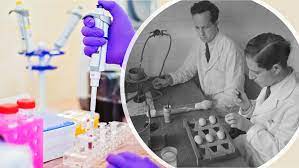Around 58 million people worldwide suffer from chronic inflammation caused by the hepatitis C virus (HCV), with approximately 300,000 fatalities annually. Despite various treatment options, no approach has significantly reduced the prevalence of HCV, driving researchers to explore vaccine development as a potential solution.
A groundbreaking study from the University of Copenhagen has recently made significant strides in this endeavor. For the first time, a cross-disciplinary research team has identified the protein complex on the surface of the hepatitis C virus that facilitates its entry into human cells.
Associate Professor Jannick Prentø, one of the leading researchers, highlighted the significance of this discovery. “We are the first ever to identify the protein complex at the surface of the hepatitis C virus that enables it to bind to our cells,” Prentø stated. This crucial breakthrough provides a detailed blueprint for developing a vaccine against HCV.
The protein complex in question plays a role similar to the spike protein found in the coronavirus, which binds to cells. Although the structural features of the HCV protein complex differ from those of the coronavirus spike protein, its function remains the same—enabling the virus to attach to and infect cells.
Postdoc Elias Augestad emphasized the potential impact of this discovery on vaccine development. “This knowledge of the structure of the protein complex will enable us to design vaccine candidates that can prevent the virus from infecting the cells,” he said. The aim is to create a vaccine that prompts the immune system to produce antibodies capable of neutralizing the hepatitis C virus.
Historically, expressing and purifying this protein complex has been fraught with challenges. The delicate nature of the proteins on the HCV surface has meant that they often disintegrate during laboratory reproduction attempts. “Expressing and cleaning up the protein complex is extremely difficult, which is why it has not been done before,” Prentø explained. “Researchers struggled to replicate these structures because they would fall apart before they could be thoroughly studied.”
However, the University of Copenhagen team has overcome these obstacles. By describing the structure of these proteins in detail, they have succeeded in reproducing the protein complexes outside of cells and studying them closely. Associate Professor Pontus Gourdon remarked on the significance of this achievement: “But we managed to describe their structure, and this has enabled us to reproduce these protein complexes outside the cell and study them closely.”
The team’s findings represent a pivotal advancement in the fight against hepatitis C, paving the way for the development of a vaccine that could significantly reduce the burden of this deadly virus. As researchers continue to explore vaccine candidates, the hope is that this breakthrough will bring us closer to a successful solution to one of the world’s most challenging health issues.












